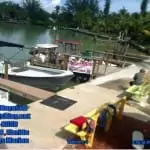![Joey Burnsed, Big Redfish, Big Smile, Sanibel Fishing & Captiva Fishing, Sanibel Island, Sunday, October 22, 2017, [File Photo: October 2012 ?].](https://captivafishing.net/wp-content/uploads/2017/04/Big-Redfish-3-10-141-e1493416252237.webp)
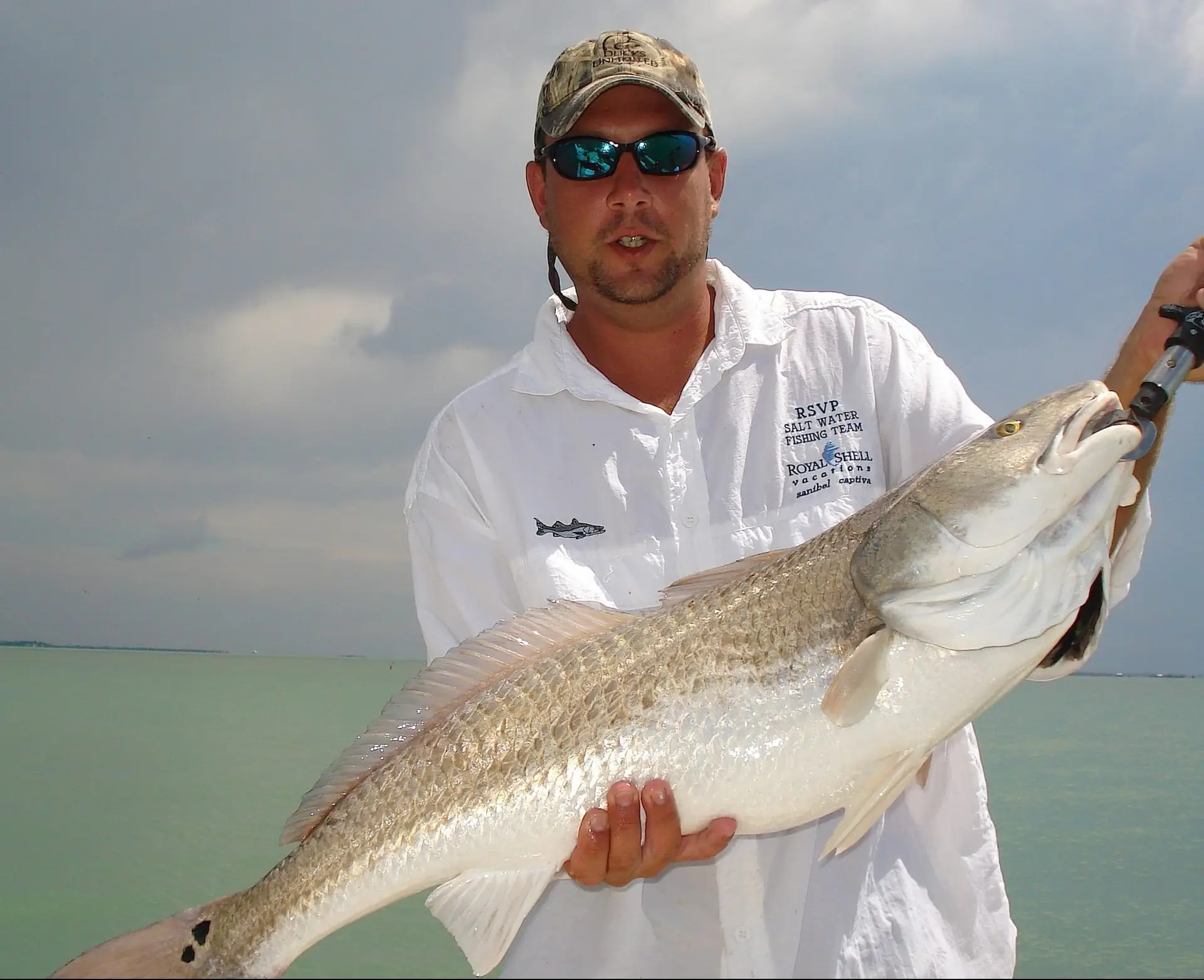
Sanibel Fishing & Captiva Fishing, Redfish or Red Drum

Sanibel Fishing & Captiva Fishing, Captiva Island, Monday, April 17: big Redfish or Red Drum moving inshore; latest Red Tide Report; better water moving north of Sanibel up through Captiva & North Captiva. Please click here to Book A Charter or call 239-472-8658.
We’re located at Castaways Marina, Santiva, Sanibel Island, just before the Blind Pass bridge to Captiva Island.
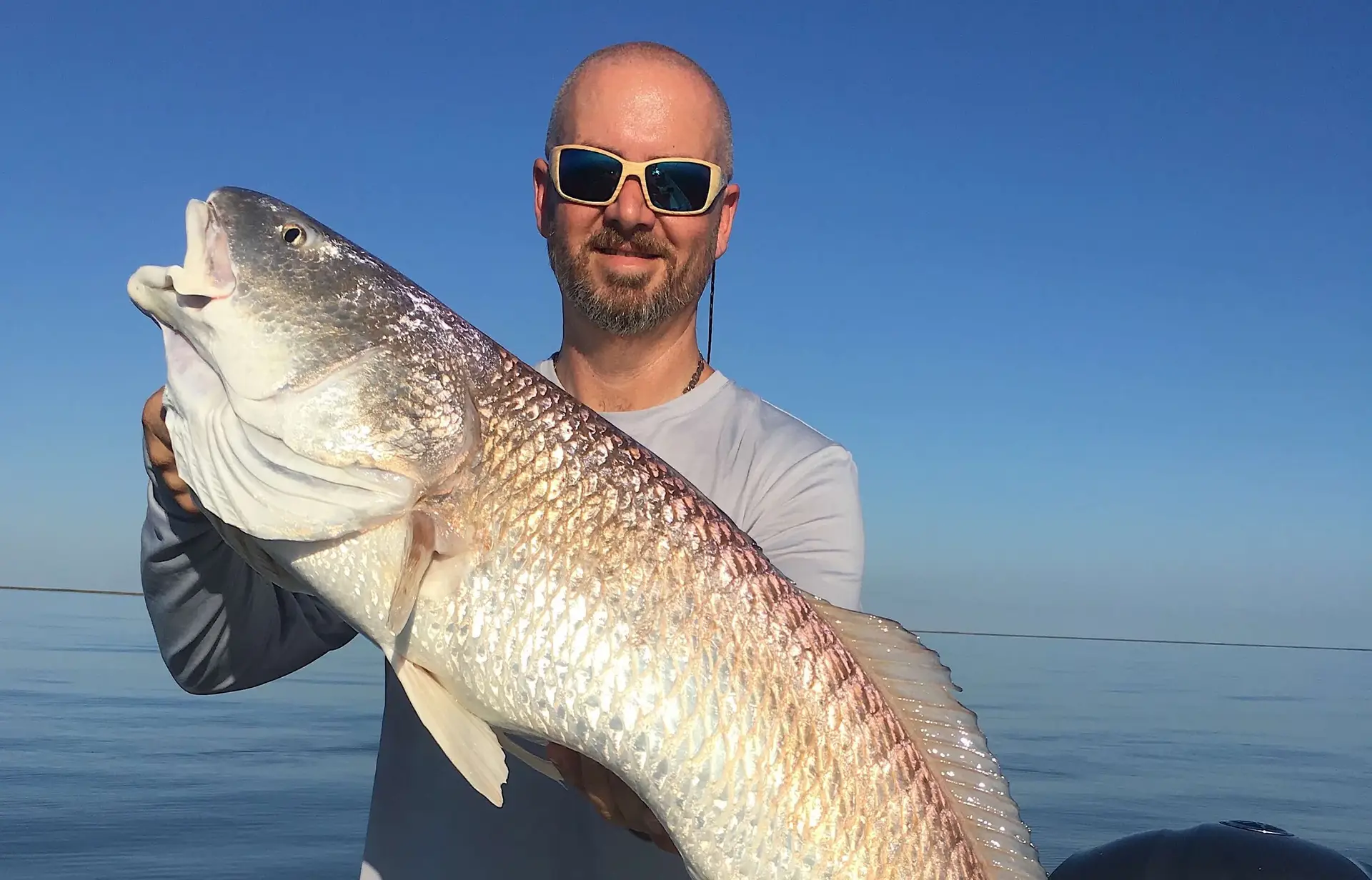
For more photos and/or fishing reports from our other Captains’ boats from other marinas, please also visit our Sanibel, Fort Myers, Seashell & Shelling, Florida Fishing Report and Cuban Fishing sites. Please check here for Live Sanibel Traffic Cams. Click here for College Of Fishing Hats & Apparel.
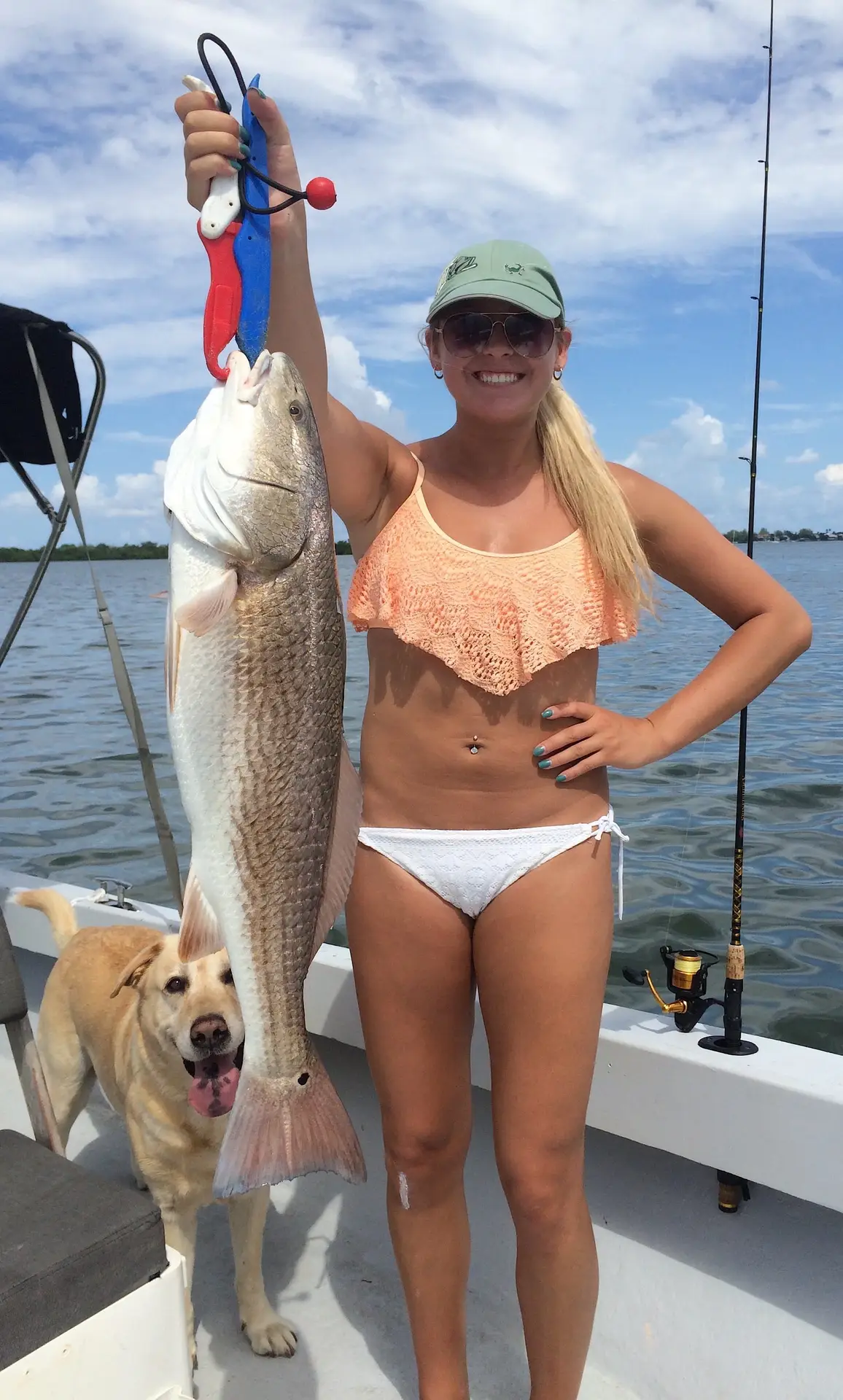
“The red drum (Sciaenops ocellatus), also known as channel bass, redfish, spot tail bass, or simply red, is a game fish found in the Atlantic Ocean from Massachusetts to Florida and in the Gulf of Mexico from Florida to northern Mexico.[1] It is the only species in the genus Sciaenops. The red drum is related to the black drum (Pogonias cromis), and the two species are often found in close proximity to each other; they can interbreed and form a robust hybrid, and younger fish are often indistinguishable in flavor.[2]
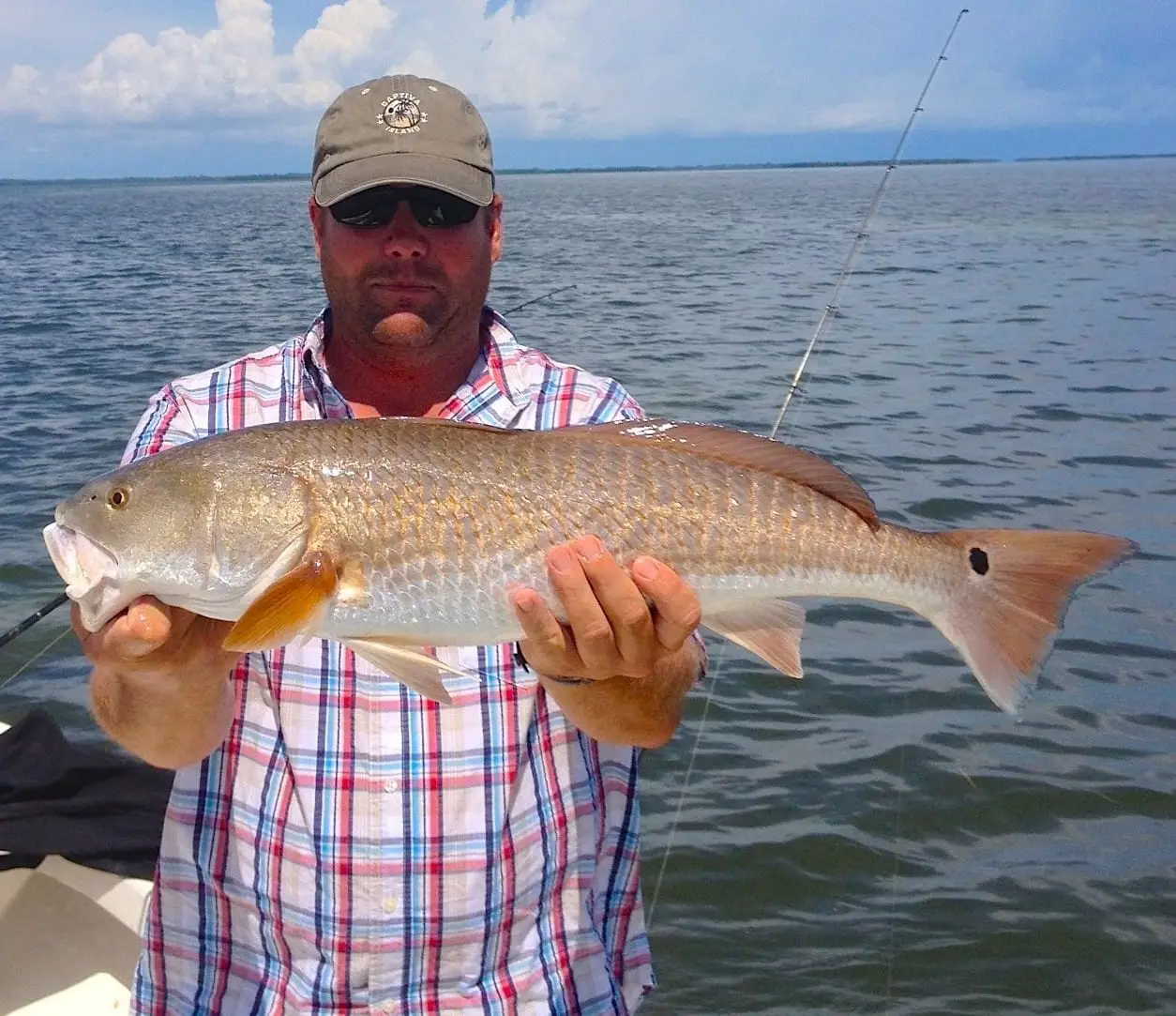
Red drum are a dark red color on the back, which fades into white on the belly. The red drum has a characteristic eyespot near the tail and is somewhat streamlined. Three-year-old red drum typically weigh 6-8 lb. The largest red drum on record weighed just over 94 lb and was caught in 1984 on Hatteras Island. Red drum and black drum both make a croaking or drumming sound when distressed.

The most distinguishing mark on the red drum is one large black spot on the upper part of the tail base. Having multiple spots is not uncommon for this fish, but having no spots is extremely rare. As the fish with multiple spots grow older, they seem to lose their excess spots. Scientists believe that the black spot near their tail helps fool predators into attacking the red drum’s tail instead of its head, allowing the red drum to escape.[3]

The red drum uses its senses of sight and touch, and its downturned mouth, to locate forage on the bottom through vacuuming or biting. On the top and middle of the water column, it uses changes in the light that might look like food. In the summer and fall, adult red drum feed on crabs, shrimp, and mullet; in the spring and winter, adults primarily feed on menhaden, mullet, pinfish, sea robin, lizardfish, spot, Atlantic croaker, and mud minnows.

Red drum naturally occur along the southern Atlantic and Gulf of Mexico coasts of Louisiana, Texas, Alabama, Mississippi, and Florida. Aquaculture activities involving them occur around the world.[4] Immature red drum prefer grass marsh areas of bays and estuaries when available. Both younger mature red drum (3-6 years of age) and bull red drum prefer rocky outcroppings including jetties and manmade structures, such as oil rigs and bridge posts. Around this type of structure, they are found throughout the water column.
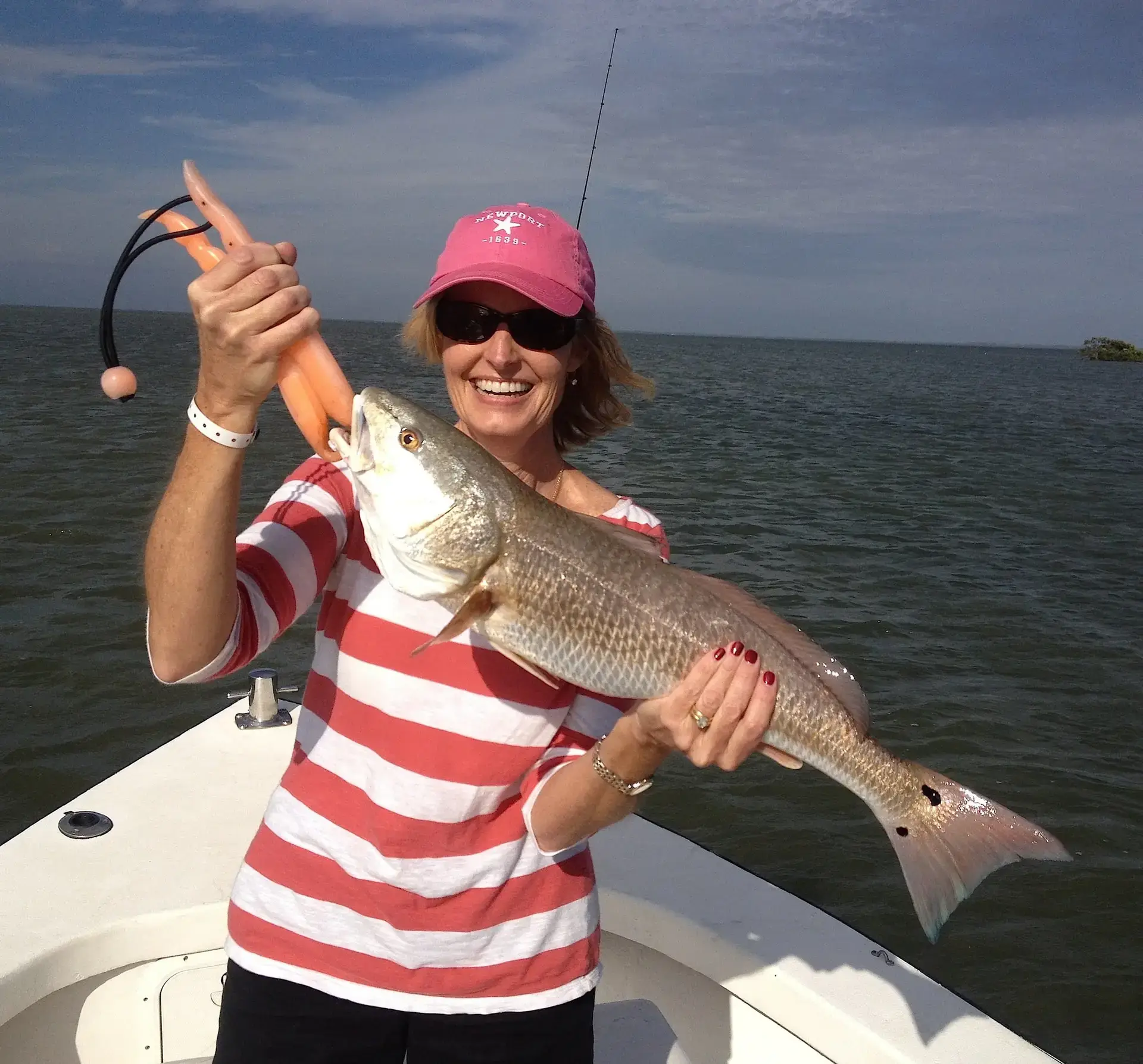
Mature red drum spawn in near shorelines from mid-August to mid-October.[5] The red drum’s eggs incubate for 24 hours. A female lays about 1.5 million (with a range of 200,000 up to more than three million) eggs per batch. Scharf (2000) reported that in the first year, young red drum in Texas estuaries grew about 0.6 mm per day, though the rates varied with location and year and were higher in more southerly estuaries.[6] After the first year, they may be 271 – 383 mm long. About half of red drum are able to reproduce by age 4 years, when they are 660-700 mm long and 3.4 – 4 kg in weight. Red drum can live to be 60 years old.
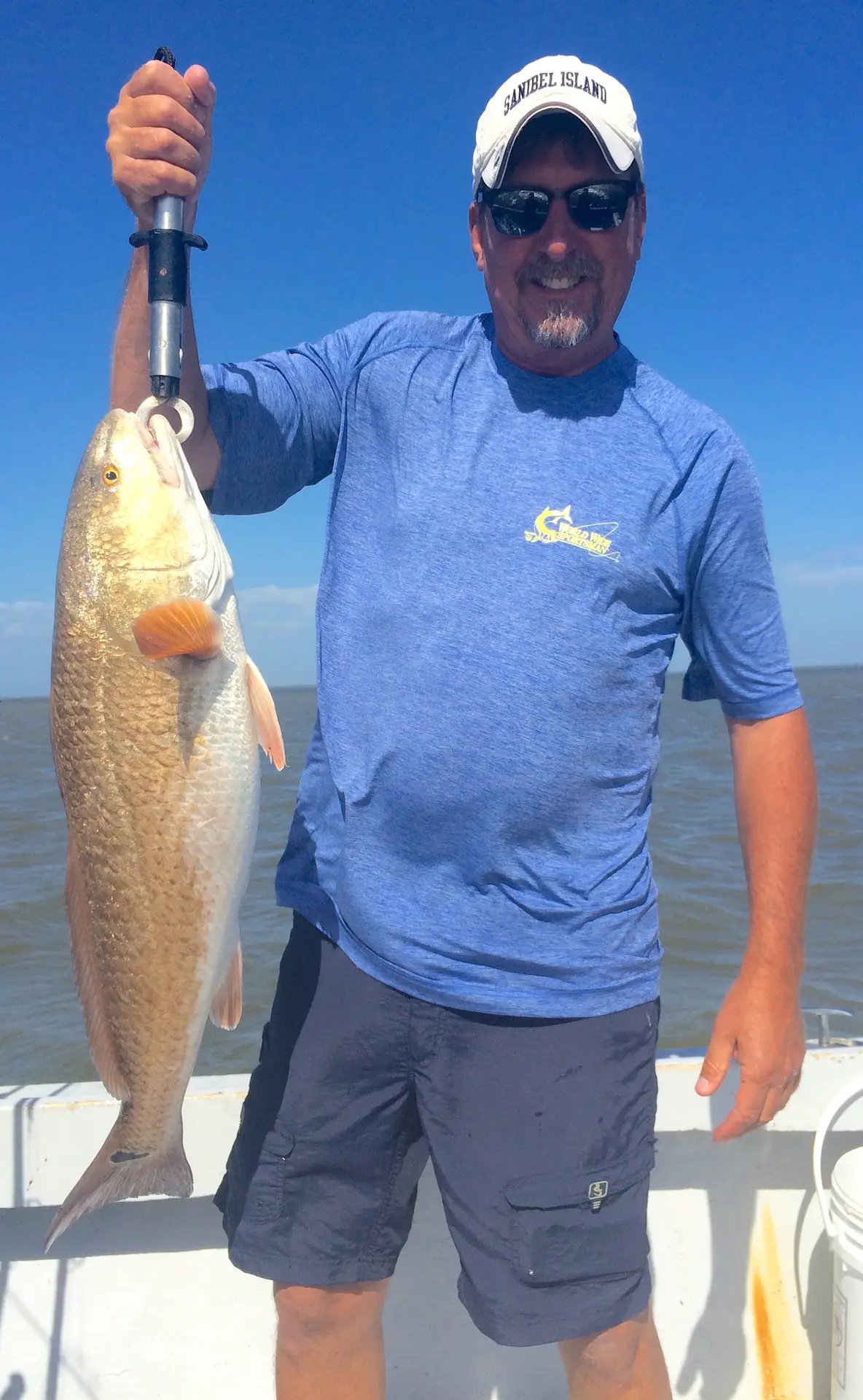
- Adults mature by 3 – 5 years of age; approximate length at maturity: males – 28 inches, females – 33 inches.
- Spawn during late summer and fall occurs near estuary inlets and passes along barrier island beaches. Males produce drumming sounds using muscular contractions to vibrate the swimbladder, to attract females.
- Larval red drum use vertical migrations to ride high salinity tidal currents into tidal creeks and shallow salt marsh nursery habitats. [7]
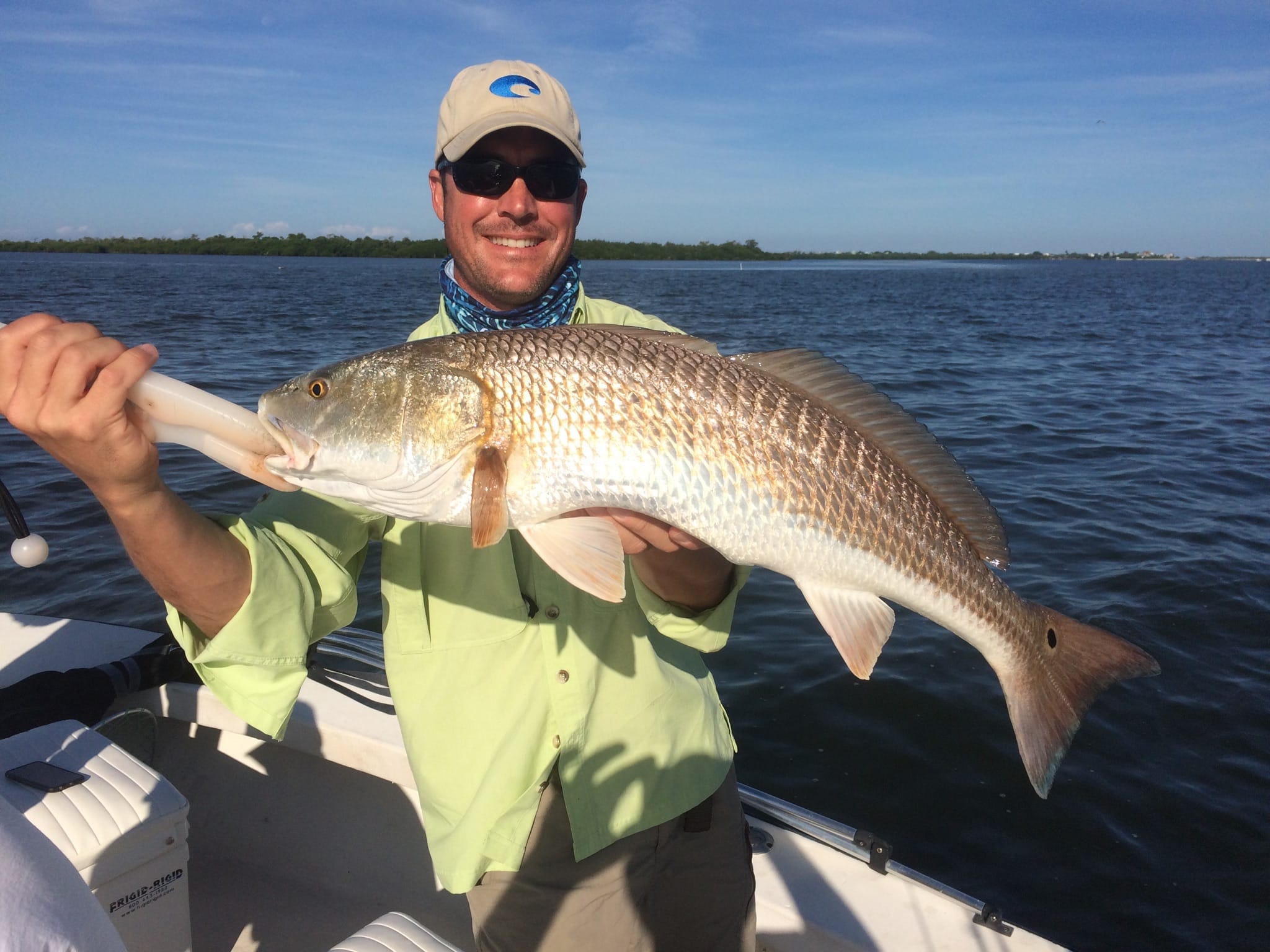
As red drum grow longer, they increase in weight exponentially. The relationship between length (L) and weight (W) for nearly all species of fish can be expressed by an equation of the form:
Invariably, b is close to 3.0 for all species, and a varies between species. Jenkins (2004)[8] reported slightly different weight-length relationships for red drum caught in the spring and the fall off the western Gulf Coast of Louisiana:
where weight is in grams and length is total length measured in millimeters. For example, these relationships predict that a 600-mm red drum (just under 2 ft long) would weigh about 2300 g (just over 5 lb). These relationships can be used more specifically to determine how healthy a sample of red drum is by comparing their actual weights to weights predicted by these relationships for the same length.
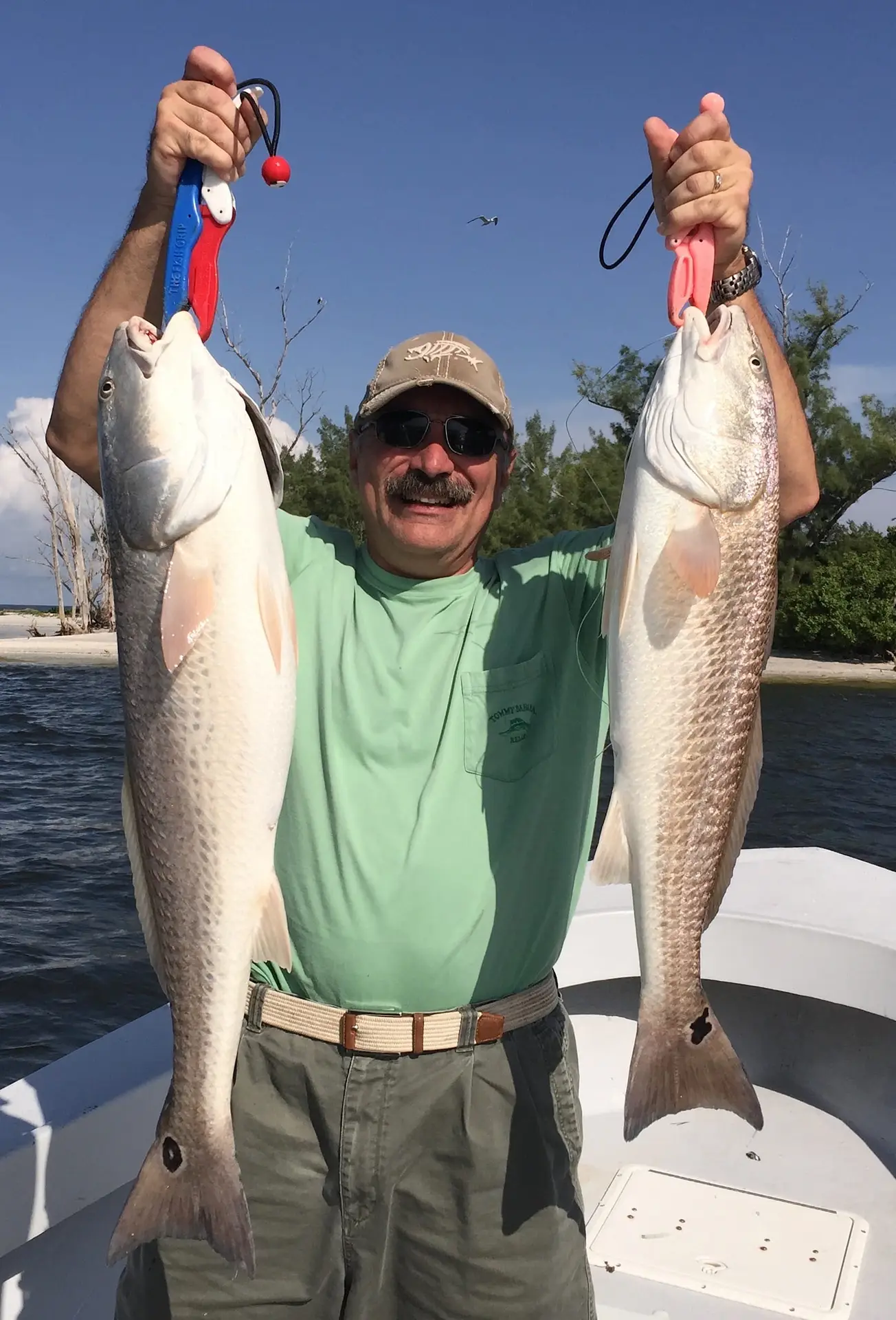
In the early 1980s, the chef Paul Prudhomme made his dish of Cajun-style blackened redfish (red drum) popular. His seasoning was then sold commercially and the dish became so popular that redfish were overfished to the point of near extinction.
On March 1, 2009, redfish was the “secret ingredient” on the television program Iron Chef America, with competitors Mourad Lahlou and Cat Cora both preparing several dishes from the fish.

Red drum have a moderate flavor and are not oily. A big drum can be tricky to clean; removing the large scales can be challenging. Many fishers prefer to fillet with an electric knife, first removing the fillet from along the backbone, and then using the electric knife to cut the fillet from the skin and scales. Fish over 15 lb can become tough and have a consistency comparable with chicken, rather than the flaky texture of many species of fish. Younger fish are often indistinguishable in flavor from black drum.[9]” More background here.
We’re big advocates of catch and release, particularly for snook, but pretty much for most species. Only take what you are going to eat, and a lot of fish are better off as sportfish, even if they are in season. Our motto is let ‘em get bigger and catch ‘em again!
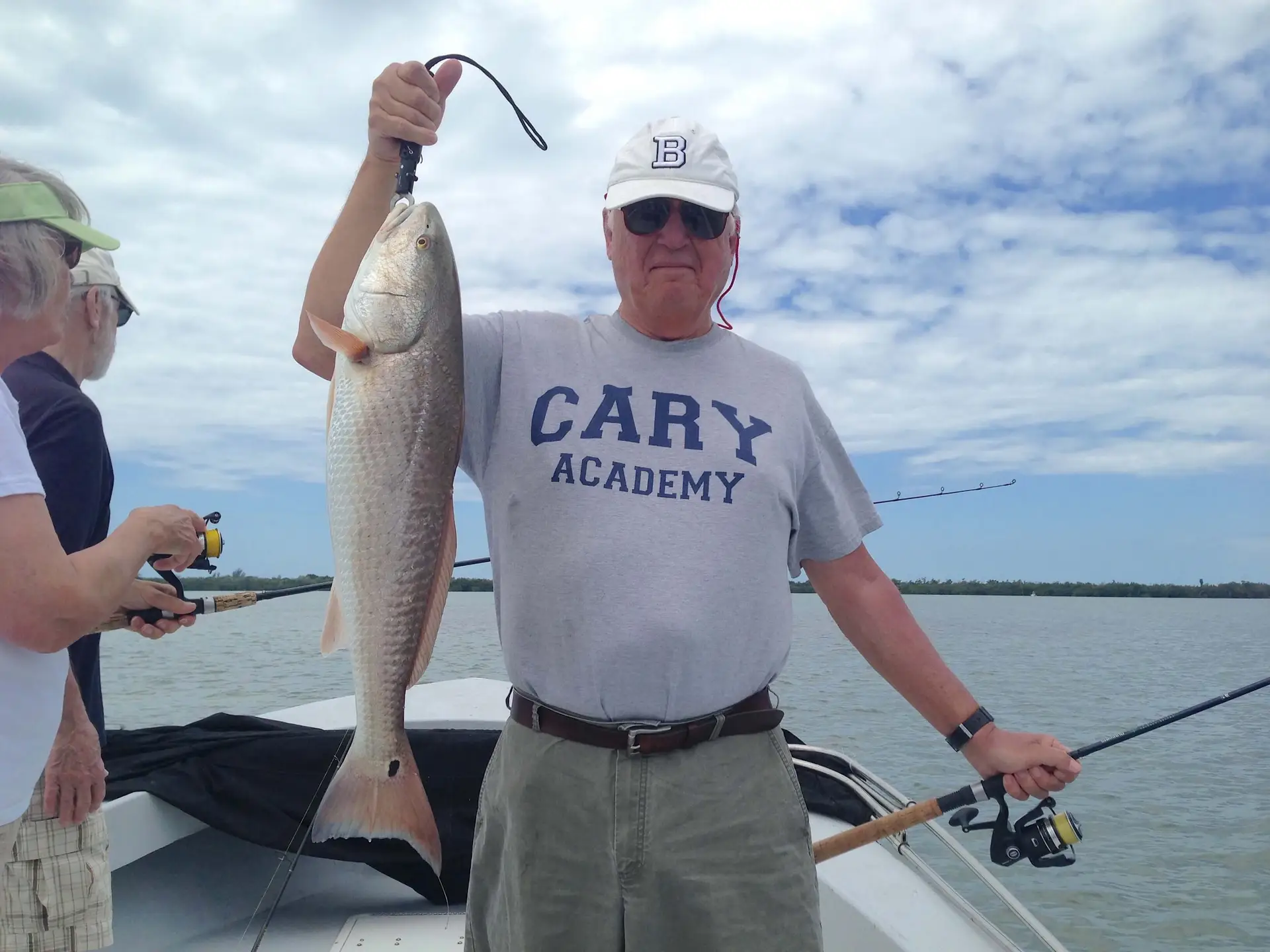
Please click calendar at upper right or call 239-472-8658 to book a charter.
Whether you’re a longtime customer who has fished with us for many years or a first-time customer, expert fisherman or just a family with young children out to catch fish and have fun, you are going to enjoy being out in the boat with Hank and me! We greatly appreciate your friendship and business!
We grew up on Sanibel and Captiva fishing and shelling every day! It is what we know and do well! If you had a good time fishing with Captain Joey Burnsed on a Sanibel & Captiva charter, please post an “excellent” review on Google Places, TripAdvisor, Yelp, or Facebook! If you had any issues at all with your charter, please let us know immediately and we’ll do everything we can to make it right! Huge thanks for doing this!
And you can like us on Facebook.
Fair winds and following seas,
Captain Joey Burnsed ~ please click calendar at the upper left or call 239-472-8658 to book a Sanibel & Captiva Islands, Boca Grande or Fort Myers fishing guide trip or shelling charter.







